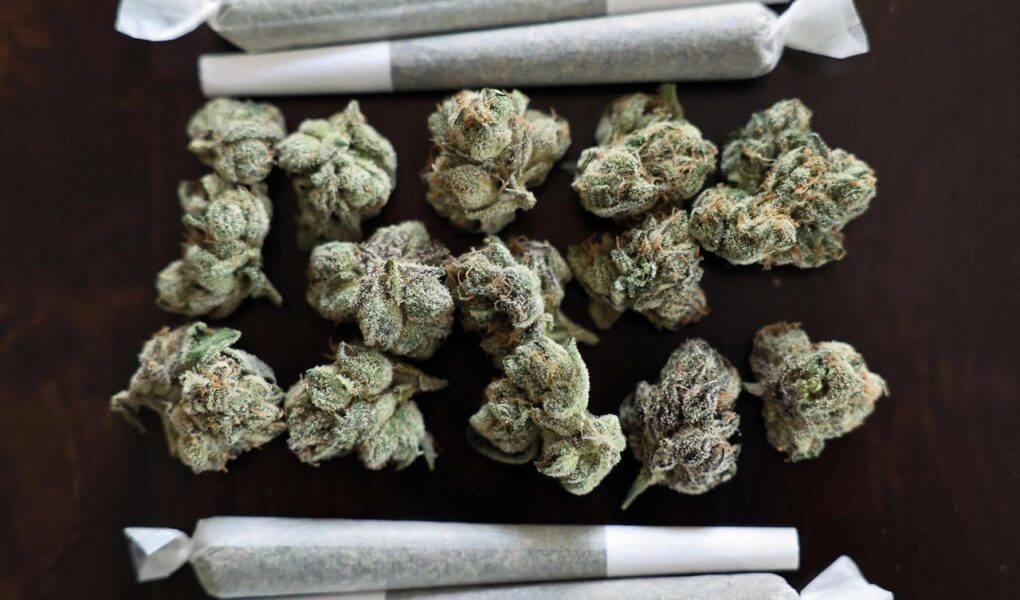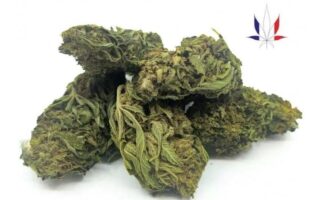In the ever-evolving landscape of modern science and societal perspectives, marijuana stands at the crossroads of curiosity, controversy, and change. Once relegated to the shadows of taboo and legal restriction, it is now a focal point in discussions surrounding medicinal benefits, recreational use, and the nature of consciousness itself. As we delve into the heart of this green enigma, a pressing question arises: Is marijuana a psychoactive drug? To unravel this, we must explore the intricacies of its chemical makeup, the effects it has on the human mind and body, and the cultural narratives that shape our understanding. Join us on this journey as we sift through myth and fact in search of clarity about this powerful plant and its place in our world.
Table of Contents
- Understanding Psychoactivity: The Science Behind Marijuana
- Effects of Marijuana on the Brain: What Research Reveals
- Legal Perspectives: Navigating Marijuanas Classification
- Informed Choices: Guidelines for Safe Use and Considerations
- Q&A
- Key Takeaways
Understanding Psychoactivity: The Science Behind Marijuana
To grasp the psychoactivity of marijuana, one must delve into the complex relationship between its chemical composition and the human brain. The primary psychoactive component in marijuana is tetrahydrocannabinol (THC). Upon consumption, THC interacts with the endocannabinoid system, specifically binding to CB1 receptors in the brain. This interaction triggers a cascade of neurological responses that can lead to altered perceptions, mood changes, and cognitive effects such as impaired memory or attention. The myriad of compounds in marijuana, including cannabinoids and terpenes, further enrich this experience, each contributing unique therapeutic and psychoactive properties. Understanding this intricate interplay is essential for both users and researchers alike.
The psychoactive effects of marijuana can vary significantly based on several factors, including the strain, dosage, and individual tolerance. Here are some key considerations that influence psychoactivity:
- Strain Type: Indica versus Sativa can lead to different experiences, with Sativa often producing more energizing effects.
- Methods of Consumption: Smoking, vaping, edibles, and tinctures can all yield varying onset times and intensity of effects.
- Individual Biochemistry: Each person’s unique physiology, including their endocannabinoid system, can alter how they react to marijuana.
| Marijuana Component | Psychoactive Effect |
|---|---|
| THC | Heightened euphoria, altered reality |
| CBD | Calming, may counteract THC effects |
| Terpenes | Enhance flavor and aroma while influencing effects |
Effects of Marijuana on the Brain: What Research Reveals
The impact of marijuana on the brain is intricate, revealing a complex interplay between its active compounds and neural mechanisms. Delta-9-tetrahydrocannabinol (THC), the primary psychoactive component, interacts with the endocannabinoid system, affecting various brain regions. Research suggests that regular use can lead to alterations in neurotransmitter levels, influencing mood, memory, and cognitive function. Some key findings include:
- Increased dopamine release: THC stimulates the brain’s reward system, potentially leading to euphoria.
- Impaired memory: Studies indicate that marijuana can disrupt short-term memory processing, especially in frequent users.
- Altered cognitive function: Chronic use may impair problem-solving abilities and attention span.
Moreover, emerging research points to the long-term effects of marijuana use, particularly among adolescents whose brains are still developing. Continued exposure might lead to structural changes in critical areas responsible for executive functioning and emotional regulation. A summary of these effects is outlined in the table below:
| Effect | Population at Risk |
|---|---|
| Memory Impairment | Adolescents and Young Adults |
| Anxiety and Mood Disorders | Long-term Users |
| Reduced Motivation | Frequent Users |
Legal Perspectives: Navigating Marijuanas Classification
As discussions around marijuana continue to evolve, the legal classification of this substance remains a heated topic. In many jurisdictions, marijuana is primarily classified as a controlled substance due to its psychoactive properties, particularly those attributed to THC (tetrahydrocannabinol). This classification triggers a myriad of legal implications, influencing everything from public policy to individual rights. Understanding these legal boundaries is essential for both consumers and legislators in order to navigate the complexities of cannabis regulation.
When evaluating the legal landscape, it is crucial to consider a few key factors:
- State vs. Federal Law: Different regulations apply depending on whether one is navigating federal statutes or state laws.
- Medical vs. Recreational Use: The classification and legality are often delineated between medical and recreational uses, complicating legal interpretations.
- Impact on Employment: Legal status can affect workplace policies and individual employment rights pertaining to marijuana use.
| Category | Legal Status | Key Considerations |
|---|---|---|
| Medical Marijuana | Legal in many states | Requires prescription; specific conditions may apply |
| Recreational Marijuana | Varies by state | Age restrictions; limits on possession |
| Industrial Hemp | Generally legal | Must contain less than 0.3% THC |
Informed Choices: Guidelines for Safe Use and Considerations
When considering the use of marijuana, it is essential to be aware of the various effects it may have on your mind and body. As a psychoactive substance, it alters your state of consciousness, which can lead to both positive and negative experiences. Understanding the primary components of marijuana, particularly tetrahydrocannabinol (THC), will help you make informed choices. Here are a few key considerations to keep in mind:
- Know Your Strain: Different strains can produce varying effects, including relaxation, euphoria, or heightened anxiety.
- Quality Control: Ensure the source is reputable, and the product is tested for contaminants.
- Legal Status: Be aware of your local laws regarding possession and use to avoid legal repercussions.
- Dosing Awareness: Start with small amounts to assess your tolerance and response.
Moreover, understanding the broader implications of marijuana use is crucial for making responsible decisions. It can impact various aspects of daily life, including cognitive function, motivation, and social interactions. Familiarize yourself with the following considerations to navigate your marijuana experience strategically:
| Consideration | Description |
|---|---|
| Physical Health | Monitor any changes in your health, especially respiratory issues with smoking. |
| Mental Health | Be cautious if you have a history of mental health issues, as it may exacerbate symptoms. |
| Social Impact | Consider how use may affect relationships and social situations. |
Q&A
Q&A: Is Marijuana a Psychoactive Drug?
Q: What does it mean for a substance to be classified as psychoactive?
A: A psychoactive substance is one that, when consumed, alters brain function and subsequently changes perception, mood, cognition, or behavior. This can range from feelings of euphoria to altered states of consciousness.
Q: So, is marijuana a psychoactive drug?
A: Yes, marijuana is classified as a psychoactive drug. The active components in marijuana, primarily THC (tetrahydrocannabinol), interact with the brain’s cannabinoid receptors, leading to various psychological effects.
Q: What are the specific effects of marijuana on the mind?
A: The effects can vary widely among individuals but typically include altered thoughts, increased sensory perception, relaxation, and euphoria. Some may experience changes in memory and coordination, while others might find the experience anxiety-inducing.
Q: How does THC contribute to marijuana’s psychoactive properties?
A: THC mimics naturally produced neurotransmitters in the body, which influences the release of other chemicals in the brain. This interaction can produce effects that range from calming to stimulating, depending on the strain and method of consumption.
Q: Are all compounds in marijuana psychoactive?
A: Not all compounds in marijuana are psychoactive. While THC is primarily responsible for the intoxicating effects, another compound called CBD (cannabidiol) is non-psychoactive and is known for its potential therapeutic benefits without causing a “high.”
Q: Can marijuana affect everyone the same way?
A: No, the effects of marijuana can vary significantly based on individual factors such as tolerance, dosage, method of consumption, and the specific strain used. These differences can impact how psychoactive effects are experienced.
Q: Is it legal for marijuana to be classified as a psychoactive substance?
A: The classification of marijuana as a psychoactive substance does not determine its legality. Laws regarding marijuana use vary widely across regions and often depend on factors such as its intended use (recreational vs. medicinal) and local regulations.
Q: Should one be cautious when using marijuana due to its psychoactive nature?
A: Yes, caution is advised, especially for inexperienced users or those with a history of mental health conditions. Understanding your own limits and setting safe environments can help in managing the effects of marijuana more responsibly.
Q: What are the potential benefits of using marijuana despite its psychoactive effects?
A: For many, marijuana offers therapeutic benefits, such as relief from chronic pain, reduced anxiety, and improved sleep. However, these benefits should be weighed against the potential for psychoactive effects that may also complicate daily activities or exacerbate certain health conditions.
Q: What are some misconceptions about marijuana being a psychoactive drug?
A: A common misconception is that all psychoactive substances are dangerous or harmful. In reality, marijuana’s effects can be both positive and negative, and its impact is largely subjective, emphasizing the need for informed and responsible use.
Q: how should one approach marijuana’s psychoactive nature?
A: Approach marijuana with an understanding of its psychoactive properties, being mindful of your own health circumstances, legal frameworks, and the potential for both beneficial and adverse effects. Knowledge equips users to make safer choices.
Key Takeaways
As we draw the curtain on this exploration of marijuana and its classification as a psychoactive drug, it becomes clear that the answer is both simple and complex. While marijuana undeniably influences the mind and alters perception through its active compounds, the broader context of its effects—ranging from therapeutic benefits to recreational use—adds layers to our understanding. Societal attitudes, legal ramifications, and personal experiences all shape how we view this multifaceted plant. Whether you find yourself in the camp of advocates or skeptics, one thing is certain: the conversation around marijuana is evolving, inviting further inquiry and reflection. As we navigate this landscape, let us continue to engage thoughtfully, armed with knowledge and open to the myriad perspectives that shape our perceptions of this age-old herb.



